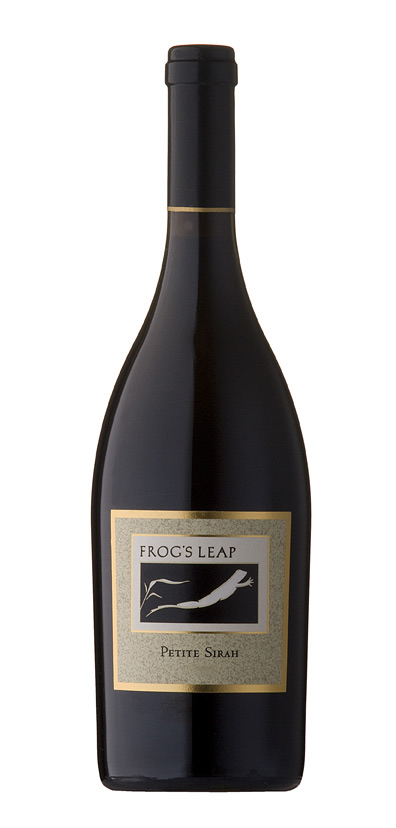 Frog’s Leap has been around since 1981 and their focus has remained resolute to this day. They grow their grapes organically utilizing dry farmed vineyards. Their wine making techniques are classic and old school in intent and execution. Neither their vineyards nor their wines are over manipulated. They are also stewards of the land they inhabit and strive to be community members that make a difference. Towards that end they have been a solar powered facility since 2005. The folks at Frog's Leap take their work, their wine and their place in the neighborhood quite seriously, but they do so while having fun, giving a wink and a smile so to speak.
A couple of days ago I made a visit to Frog’s Leap in Napa Valley. Though I’ve enjoyed a number of their wines over the years it was my first time visiting. Along with a couple of friends I made my way into their reception area and we were quickly seated even though we arrived quite a bit earlier than our scheduled appointment. They have an open porch with tables to host tastings, from that vantage point we could look at some of their vines as well as one group of visitors playing a game on the lawn while they enjoyed a taste of wine.
Frog’s Leap has been around since 1981 and their focus has remained resolute to this day. They grow their grapes organically utilizing dry farmed vineyards. Their wine making techniques are classic and old school in intent and execution. Neither their vineyards nor their wines are over manipulated. They are also stewards of the land they inhabit and strive to be community members that make a difference. Towards that end they have been a solar powered facility since 2005. The folks at Frog's Leap take their work, their wine and their place in the neighborhood quite seriously, but they do so while having fun, giving a wink and a smile so to speak.
A couple of days ago I made a visit to Frog’s Leap in Napa Valley. Though I’ve enjoyed a number of their wines over the years it was my first time visiting. Along with a couple of friends I made my way into their reception area and we were quickly seated even though we arrived quite a bit earlier than our scheduled appointment. They have an open porch with tables to host tastings, from that vantage point we could look at some of their vines as well as one group of visitors playing a game on the lawn while they enjoyed a taste of wine.
It was a beautiful day and Frog’s Leap is an excellent atmosphere in which to taste wine. After being seated we had someone dedicated to pouring us wine and telling us anything we might want to know about the facility and the wines. Their standard flight features 4 selections and the tastings are priced at $20. In addition to the four we were lucky enough to sample a few other releases. On weekdays they also offer tours by prior appointment. What follows are my thoughts on a few of my favorite selections I tasted on my visit.
Frog’s Leap 2011 Rutherford Sauvignon Blanc: This 100% varietal wine is what got things off the ground for Frog’s Leap more than 30 years ago. All of the fruit for this offering comes from Rutherford. It was fermented and aged in stainless steel. This wine has a suggested retail price of $20. Citrus and mineral aromas pop out of this wine’s nose. The palate is gently layered with tropical and citrus fruit characteristics. Zippy acidity, spices and minerals galore are at play here as well and they continue through the finish which is clean, crisp and refreshing. My overriding desire after taking a sip was simply to take another. This is a lovely Sauvignon Blanc whose flavors are not forceful or over the top but rather persistent in their complexity and depth.
Frog’s Leap 2010 Cabernet Sauvignon: In addition to Cabernet Sauvignon, small amounts of Merlot and Cabernet Franc are blended into this wine. It was aged for 21 months in French oak and it has a suggested retail price of $42. The small dollop of Cabernet Franc in this blend really helps the nose pop. As a result cherry and leather aromas are in striking abundance. The palate here is smooth and approachable with deep berry flavors; Blackberry and plum are of particular note along with continued cherry. Earth and a bit of mocha emerge on the finish which has impressive length for the price. This wine will drink well for a number of years but it’s incredibly engaging and exuberant right now, there’s simply no reason to wait on this one.
Frog’s Leap 2010 Zinfandel: This wine is made in classic Field Blend style. This wine is composed of Zinfandel (77.5%), Petite Sirah (22%) and Carignane (0.5%). All 3 varietals were picked, fermented and aged together. Barrel aging took place over 12 months in French oak. This wine has a suggested retail price of $27. This Zinfandel really emerged after it was sitting in the glass for 15 or 20 minutes. Cherry aromas came out in droves along with a dollop of vanilla bean. Both red and black berry flavors dominate the palate along with a nice complement of spices such as clove, cinnamon and pepper. The finish is lengthy with sour cherry, bits of chocolate sauce and a final bit of biting spice. This is a proportionate Zinfandel made in a classic style. It’s spicy, fun, delicious and easy drinking without being over the top or simplistic. It’s a wine that will pair as beautifully with a pizza as it will a burger or soft polenta topped with sautéed mushrooms. Whatever you pair it with, you’re likely to love this terrifically well made Zinfandel.
Frog’s Leap 2010 Petite Sirah: This selection is 100% varietal and all of the fruit came from Rutherford. Aging took place over 11 months in French oak. The Frog’s Leap Petite Sirah has a suggested retail price of $37. In the glass this wine is as black as night. The aromas that emerge are dark and brooding to match. The first sip reveals Blackberries, blueberries and plum pudding spices. The finish has good length with hints of earth and a bit of chicory. This Petite Sirah is young and a bit tight right now with firm tannins. Time in the bottle will soften this wine and really help show off its charms. I’m fond of aging well made, balanced Petite Sirah that has good structure and acid. The Frog’s Leap Petite hits all those marks and I can’t wait to see where this wine is in about a decade. Of course you could decant it for a few hours and speed up the process. In any case this is a promising example of one of my favorite varietals.
It took me way too long to make it to Frog’s Leap for the first time, suffice it to say my second visit won’t take nearly as long. This is a great winery to visit in the heart of Napa Valley. The wines are terrific and well made. Each of them was balanced and proportionate with reasonable alcohol content, bucking current trends. The Zinfandel in particular stood out for being under 14%, something worth noting in an environment where some folks are making Zins that tip the scales over 16%. The wines are also clean and fresh with pure fruit flavors bursting through. Additionally the atmosphere is welcoming and charming with lovely understated décor that is soothing to the eye. The folks working at Frog’s Leap are incredibly friendly, accommodating and quite knowledgeable about the wines and Frog’s Leap in general. Next time you’re in Napa Valley, I strongly urge you to make a beeline to Frog’s Leap.

 Last week I was lucky enough to sit and taste wine over dinner with Bernard Portet at
Last week I was lucky enough to sit and taste wine over dinner with Bernard Portet at  When I was in Chile last month I participated in a virtual Blogger tasting. I’d taken part in previous tastings of that kind from home before. But on this occasion I was onsite in an adjacent room while the winemakers discussed their varied offerings a few feet away. Getting to mingle with a roomful of winemakers before and after the tasting was one of many highlights that dotted a wonderful week in Chile. There were several standouts for me that day; one of them came from producer
When I was in Chile last month I participated in a virtual Blogger tasting. I’d taken part in previous tastings of that kind from home before. But on this occasion I was onsite in an adjacent room while the winemakers discussed their varied offerings a few feet away. Getting to mingle with a roomful of winemakers before and after the tasting was one of many highlights that dotted a wonderful week in Chile. There were several standouts for me that day; one of them came from producer  The Ventisquero 2010 Grey Carmenère was produced from fruit sourced at Trinidad Vineyard in Chile’s Maipo Valley. This is a 100% varietal offering. Fermentation took place in stainless steel tanks followed by aging in French oak over 18 months. 33% of the barrels utilized were new. An additional 8 months of bottle aging occurred prior to release. This wine has a suggested retail price of $23.99. Boysenberry, vanilla and violet aromas burst out from the nose of this Carmenère. The palate is juicy and pleasing with plums, blackberry and berry fruit flavors galore. Green herb notes underscore things here and play a supporting role. Black tea, plum pudding spices, minerals and black pepper all emerge on the finish. There is a lovely balance in this wine with loads of eager fruit buoyed by lots of spice and a lovely collection of herbaceous characteristics. The Ventisquero Carmenère works equally well paired with full flavored foods as it does on its own.
The Ventisquero 2010 Grey Carmenère was produced from fruit sourced at Trinidad Vineyard in Chile’s Maipo Valley. This is a 100% varietal offering. Fermentation took place in stainless steel tanks followed by aging in French oak over 18 months. 33% of the barrels utilized were new. An additional 8 months of bottle aging occurred prior to release. This wine has a suggested retail price of $23.99. Boysenberry, vanilla and violet aromas burst out from the nose of this Carmenère. The palate is juicy and pleasing with plums, blackberry and berry fruit flavors galore. Green herb notes underscore things here and play a supporting role. Black tea, plum pudding spices, minerals and black pepper all emerge on the finish. There is a lovely balance in this wine with loads of eager fruit buoyed by lots of spice and a lovely collection of herbaceous characteristics. The Ventisquero Carmenère works equally well paired with full flavored foods as it does on its own. The Rodney Strong Vineyards 2011 Charlotte’s Home Sauvignon Blanc was produced from fruit sourced in Alexander Valley and Russian River Valley. 90% was fermented in temperature controlled stainless steel at low temperatures; the balance in French oak. This widely available wine has a suggested retail price of $15 but can most often be found selling for closer to $11. Lemon ice, white pepper and mineral aromas fill the excitable nose of this 2011 Sauvignon Blanc. Citrus characteristics dominate the palate along with bits of orchard fruit and a gentle hint of pineapple as well. The finish is clean and crisp with mineral and spice notes reverberating well after the last sip has been swallowed. Year after year this wine delivers awesome flavor for a very small price. This is a terrific Sauvignon Blanc for the money and one you can bank on one vintage after another.
The Rodney Strong Vineyards 2011 Charlotte’s Home Sauvignon Blanc was produced from fruit sourced in Alexander Valley and Russian River Valley. 90% was fermented in temperature controlled stainless steel at low temperatures; the balance in French oak. This widely available wine has a suggested retail price of $15 but can most often be found selling for closer to $11. Lemon ice, white pepper and mineral aromas fill the excitable nose of this 2011 Sauvignon Blanc. Citrus characteristics dominate the palate along with bits of orchard fruit and a gentle hint of pineapple as well. The finish is clean and crisp with mineral and spice notes reverberating well after the last sip has been swallowed. Year after year this wine delivers awesome flavor for a very small price. This is a terrific Sauvignon Blanc for the money and one you can bank on one vintage after another.
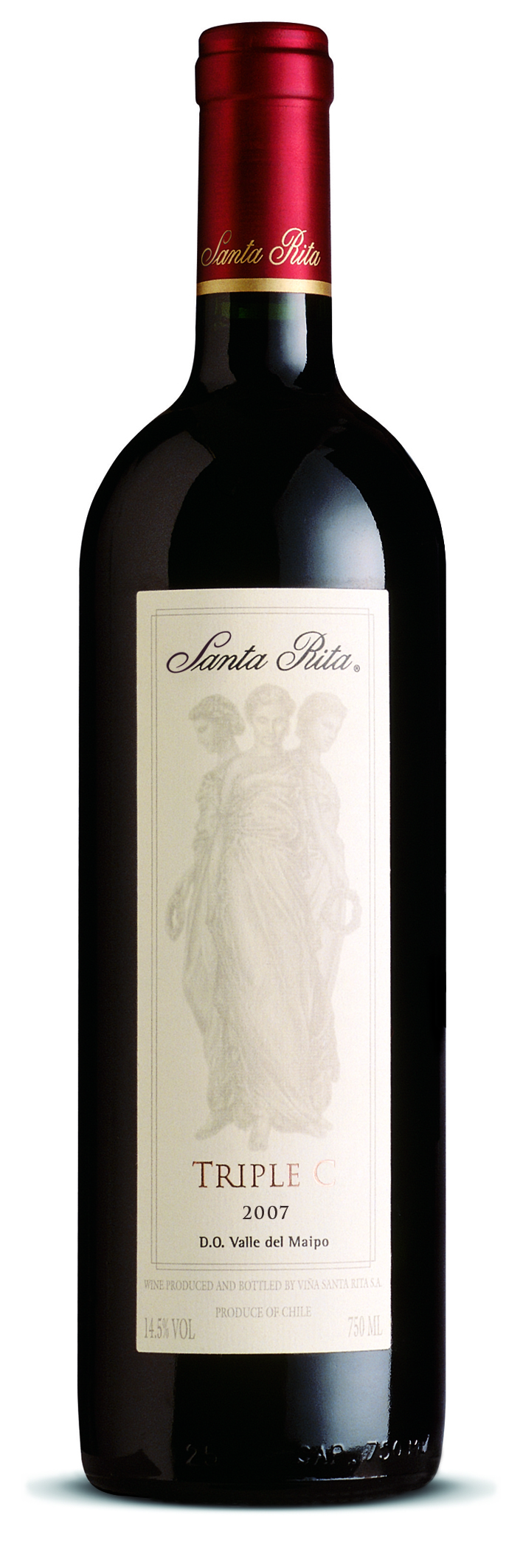 Santa Rita 2009 Medalla Real Cabernet Sauvignon D.O. Maipo Valley: This wine is predominately Cabernet Sauvignon (95%) with a touch of Cabernet Franc (5%) blended in. The vines utilized have 15 years of age on them. Barrel aging occurred over 14 months in a combination of 1st, 2nd and 3rd use oak. The Medalla Real range of wines has a suggested retail price of $19.99. This wine has a classic Cabernet Sauvignon nose of red and black berries laced with hints of toast and wisps of vanilla bean. Boatloads of cherry flavors dominate the palate and lead to pomegranate characteristics on the finish along with earth and black pepper. This is a remarkable Cabernet Sauvignon for under $20. A Cabernet of this quality, depth and persistence from Napa Valley to use one point of comparison would easily fetch $35-$40.
Santa Rita 2009 Medalla Real Cabernet Sauvignon D.O. Maipo Valley: This wine is predominately Cabernet Sauvignon (95%) with a touch of Cabernet Franc (5%) blended in. The vines utilized have 15 years of age on them. Barrel aging occurred over 14 months in a combination of 1st, 2nd and 3rd use oak. The Medalla Real range of wines has a suggested retail price of $19.99. This wine has a classic Cabernet Sauvignon nose of red and black berries laced with hints of toast and wisps of vanilla bean. Boatloads of cherry flavors dominate the palate and lead to pomegranate characteristics on the finish along with earth and black pepper. This is a remarkable Cabernet Sauvignon for under $20. A Cabernet of this quality, depth and persistence from Napa Valley to use one point of comparison would easily fetch $35-$40.
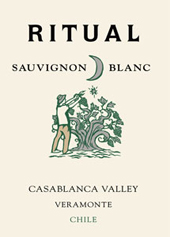 Veramonte – 2011 Ritual Sauvignon Blanc – This wine is richer and riper than the entry level Sauvignon Blanc. The palate has a bit more heft than the average Chilean Sauvignon Blanc. It’s a spicy and round wine with a mineral laden finish. Most of the fruit was sourced from two high performing blocks. Their goal of proactive farming as opposed to winery manipulation shines through in this release.
Veramonte – 2011 Ritual Sauvignon Blanc – This wine is richer and riper than the entry level Sauvignon Blanc. The palate has a bit more heft than the average Chilean Sauvignon Blanc. It’s a spicy and round wine with a mineral laden finish. Most of the fruit was sourced from two high performing blocks. Their goal of proactive farming as opposed to winery manipulation shines through in this release. The Gary Farrell 2010 Sauvignon Blanc was produced from fruit sourced at Redwood Ranch in Sonoma County. This vineyard sits at the very southern end of Alexander Valley. The vines sourced for this offering were planted in 1997. The Gary Farrell 2010 Sauvignon Blanc is a 100% varietal wine. This wine was bottled n January 2011 after a short time in oak. Just over 1,500 cases of this offering were produced and it has a suggested retail price of $25. Pear and citrus aromas fill the nose of this 2010 Sauvignon Blanc. Copious quantities of citrus and topical fruit flavors such as yellow plum, mango and lemon zest are layered throughout a welcoming and weighty mid-palate. Spice and continued fruit flavors fill the impressively lengthy finish of this Sauvignon Blanc. If you prefer Sauvignon Blanc that leans towards the tropical and fruity side, this beauty is for you.
The Gary Farrell 2010 Sauvignon Blanc was produced from fruit sourced at Redwood Ranch in Sonoma County. This vineyard sits at the very southern end of Alexander Valley. The vines sourced for this offering were planted in 1997. The Gary Farrell 2010 Sauvignon Blanc is a 100% varietal wine. This wine was bottled n January 2011 after a short time in oak. Just over 1,500 cases of this offering were produced and it has a suggested retail price of $25. Pear and citrus aromas fill the nose of this 2010 Sauvignon Blanc. Copious quantities of citrus and topical fruit flavors such as yellow plum, mango and lemon zest are layered throughout a welcoming and weighty mid-palate. Spice and continued fruit flavors fill the impressively lengthy finish of this Sauvignon Blanc. If you prefer Sauvignon Blanc that leans towards the tropical and fruity side, this beauty is for you.
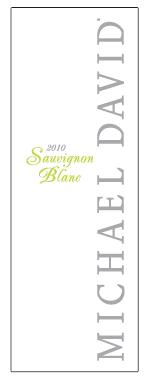
 layered and fairly intense. Dark chocolate and hints of earth mark the velvety finish of this wine. Petite Petit has firm tannins that yield with some air. This is a big, bold wine that will work best paired with similar styled foods. At 85% Petite Sirah this wine could legally be labeled as such; however the Petit Verdot plays a pivotal role here at 15% adding such depth and dimension that the Petite Petit name is wholly appropriate and actually quite perfect.
layered and fairly intense. Dark chocolate and hints of earth mark the velvety finish of this wine. Petite Petit has firm tannins that yield with some air. This is a big, bold wine that will work best paired with similar styled foods. At 85% Petite Sirah this wine could legally be labeled as such; however the Petit Verdot plays a pivotal role here at 15% adding such depth and dimension that the Petite Petit name is wholly appropriate and actually quite perfect. Sauvignon Blanc is a varietal that adapts well to a large number of regions the world over. This grape is made in a host of enjoyable styles. Mendocino County is one of the regions that can under the right circumstances produce distinct Sauvignon Blanc. Today I’ll look at a value priced offering from
Sauvignon Blanc is a varietal that adapts well to a large number of regions the world over. This grape is made in a host of enjoyable styles. Mendocino County is one of the regions that can under the right circumstances produce distinct Sauvignon Blanc. Today I’ll look at a value priced offering from 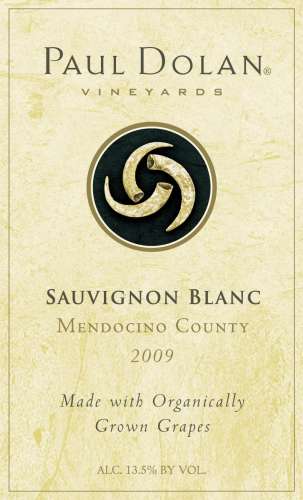
 Nals Margreid 2007 Pinot Grigio Punggl DOC Alto Adige. This single vineyard wine is 100% Pinot Grigio. Half of the grapes for this wine were fermented and aged in large oak barrels, the other half in stainless steel tanks. At release this wine had a suggested retail price of $24. The 2009 is the current vintage of this particular wine. The 2007 features lots of yellow fruit flavors throughout a round and sweet but well balanced palate. It shows off the juicy flavors that are prevalent with relatively small production Pinot Grigio treated with care; as opposed to the vast array of anonymous Pinot Grigio that hits US shelves by the boatload.
Nals Margreid 2007 Pinot Grigio Punggl DOC Alto Adige. This single vineyard wine is 100% Pinot Grigio. Half of the grapes for this wine were fermented and aged in large oak barrels, the other half in stainless steel tanks. At release this wine had a suggested retail price of $24. The 2009 is the current vintage of this particular wine. The 2007 features lots of yellow fruit flavors throughout a round and sweet but well balanced palate. It shows off the juicy flavors that are prevalent with relatively small production Pinot Grigio treated with care; as opposed to the vast array of anonymous Pinot Grigio that hits US shelves by the boatload.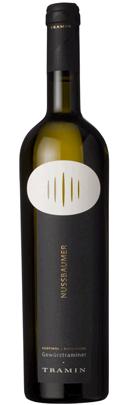 $40. Apple, limestone and minerals are all present on this wine. Its overall style in many ways brings to mind aged Burgundy. The purity of fruit and length of finish are both impressive.
$40. Apple, limestone and minerals are all present on this wine. Its overall style in many ways brings to mind aged Burgundy. The purity of fruit and length of finish are both impressive.  In the early 90’s when I first started visiting Napa Valley a handful of producers were of specific interest to me. I’d visit them time and again because they had one or more wines that I enjoyed regularly and I was also always eager to taste smaller production things that I couldn’t get on my shelf back home. Franciscan Estate was one of those producers. Their Cabernet Sauvignon, Merlot and Chardonnay were the three wines I drank with the most regularity, but I really enjoyed the majority of their portfolio quite a bit. As happens from time to time they slipped off my radar a bit of late. The number of wines out there are practically dizzying in number, making it difficult to always go back and revisit. So when current releases of Chardonnay and Sauvignon Blanc from Franciscan landed on my desk recently it felt like it does when an old friend you haven’t seen in awhile calls or rings your doorbell, or these days, pokes you on Facebook. Regardless of how they reach out, the reaction is usually the same you want to know how they’re doing. And that was exactly what I was wondering about
In the early 90’s when I first started visiting Napa Valley a handful of producers were of specific interest to me. I’d visit them time and again because they had one or more wines that I enjoyed regularly and I was also always eager to taste smaller production things that I couldn’t get on my shelf back home. Franciscan Estate was one of those producers. Their Cabernet Sauvignon, Merlot and Chardonnay were the three wines I drank with the most regularity, but I really enjoyed the majority of their portfolio quite a bit. As happens from time to time they slipped off my radar a bit of late. The number of wines out there are practically dizzying in number, making it difficult to always go back and revisit. So when current releases of Chardonnay and Sauvignon Blanc from Franciscan landed on my desk recently it felt like it does when an old friend you haven’t seen in awhile calls or rings your doorbell, or these days, pokes you on Facebook. Regardless of how they reach out, the reaction is usually the same you want to know how they’re doing. And that was exactly what I was wondering about 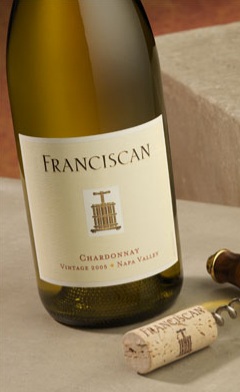 The Franciscan Estate 2009 Chardonnay was produced using fruit sourced in Carneros and southern Napa Valley. This wine is 100% Chardonnay. Fermentation took place in barrel followed by 7 months of aging in small French and American oak barrels; 20% of them were new. Just fewer than 59,000 cases of this wine were produced and it has a suggested retail price of $18.
The Franciscan Estate 2009 Chardonnay was produced using fruit sourced in Carneros and southern Napa Valley. This wine is 100% Chardonnay. Fermentation took place in barrel followed by 7 months of aging in small French and American oak barrels; 20% of them were new. Just fewer than 59,000 cases of this wine were produced and it has a suggested retail price of $18.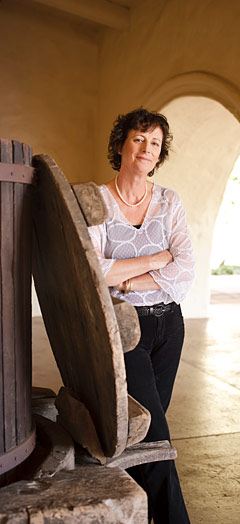 As we’ve grown precipitously as a wine drinking nation over the last couple of decades our choices have also increased. The number of outlets selling wine is way up and the options we have once we go there are in sharp contrast to what was available a number of years ago. The temptation in our culture is also to chase the new hot thing. Sometimes that leaves little room to reconsider or reconnect with something we already love. In this case that something is the
As we’ve grown precipitously as a wine drinking nation over the last couple of decades our choices have also increased. The number of outlets selling wine is way up and the options we have once we go there are in sharp contrast to what was available a number of years ago. The temptation in our culture is also to chase the new hot thing. Sometimes that leaves little room to reconsider or reconnect with something we already love. In this case that something is the 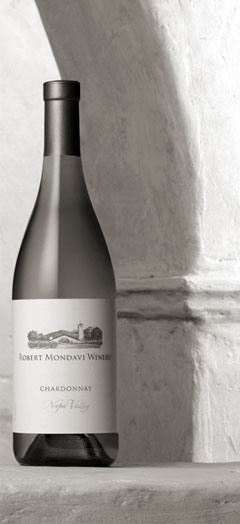 The event took place at
The event took place at 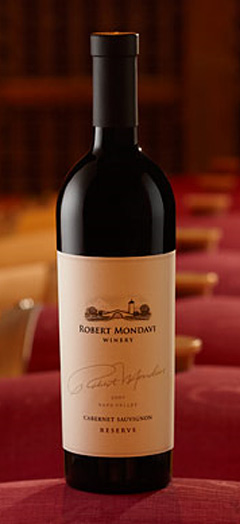 The Robert Mondavi Winery 2007 Cabernet Sauvignon was made entirely with fruit from Oakville and 93% of it from To Kalon. This wine is bigger, bolder and a bit brasher today. It has firm tannins that need some time in the bottle or some aeration to soften a bit. The elements which make the 1996 so drinkable today are also there in the 2007. It’s simply loaded with fruit and spice flavors that are accented by the time spent in barrel. Just less than 10,000 cases were produced and it has a suggested retail price of $135. Ultimately, the 2007 has the hallmarks of a wine that promises to be an even more impressive effort than the 1996. The question after purchasing it is if you have patience. It’s very enjoyable now, particularly with full flavored foods. However if you give it 5 or 10 years of proper storage you’ll be rewarded with a slightly mellower, more resolved wine that will just knock your socks off. You really can’t go wrong either way, it depends which experience you prefer.
The Robert Mondavi Winery 2007 Cabernet Sauvignon was made entirely with fruit from Oakville and 93% of it from To Kalon. This wine is bigger, bolder and a bit brasher today. It has firm tannins that need some time in the bottle or some aeration to soften a bit. The elements which make the 1996 so drinkable today are also there in the 2007. It’s simply loaded with fruit and spice flavors that are accented by the time spent in barrel. Just less than 10,000 cases were produced and it has a suggested retail price of $135. Ultimately, the 2007 has the hallmarks of a wine that promises to be an even more impressive effort than the 1996. The question after purchasing it is if you have patience. It’s very enjoyable now, particularly with full flavored foods. However if you give it 5 or 10 years of proper storage you’ll be rewarded with a slightly mellower, more resolved wine that will just knock your socks off. You really can’t go wrong either way, it depends which experience you prefer. Lately the white varietal out of Argentina that’s been getting a lot of attention is Torrontes. Rightly so in some ways as this is something Argentina offers that no one else really does. Sauvignon Blanc on the other hand is available from many of the world’s great wine making countries. That said there are some excellent and unique expressions of this classic grape coming out of Argentina and they deserve their due. Today I’ll look at one from
Lately the white varietal out of Argentina that’s been getting a lot of attention is Torrontes. Rightly so in some ways as this is something Argentina offers that no one else really does. Sauvignon Blanc on the other hand is available from many of the world’s great wine making countries. That said there are some excellent and unique expressions of this classic grape coming out of Argentina and they deserve their due. Today I’ll look at one from  Regardless of the grape variety in question there are always an assortment of styles and differentiations to be had. This is based on where it’s grown, how it’s grown, the manner in which it’s handled, winemaking technique and of course the year to year vagaries of weather. All that on the table, I believe Sauvignon Blanc stands as one of the varieties with the greatest number of styles and expressions. Today I’ll look at one from
Regardless of the grape variety in question there are always an assortment of styles and differentiations to be had. This is based on where it’s grown, how it’s grown, the manner in which it’s handled, winemaking technique and of course the year to year vagaries of weather. All that on the table, I believe Sauvignon Blanc stands as one of the varieties with the greatest number of styles and expressions. Today I’ll look at one from  The
The 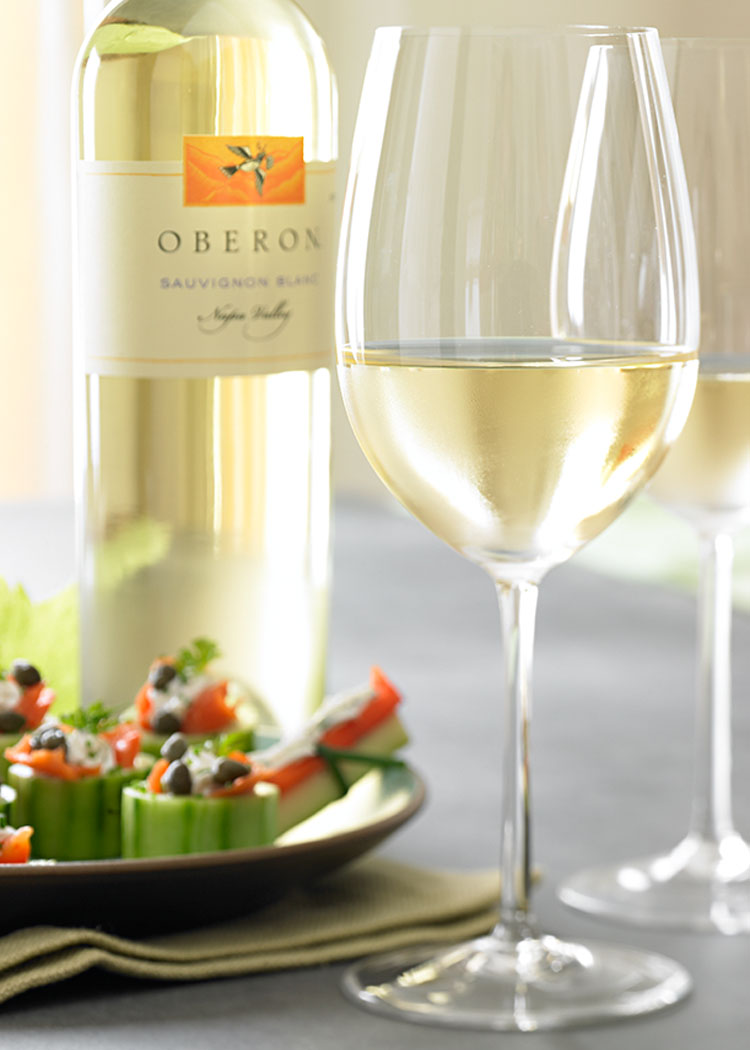
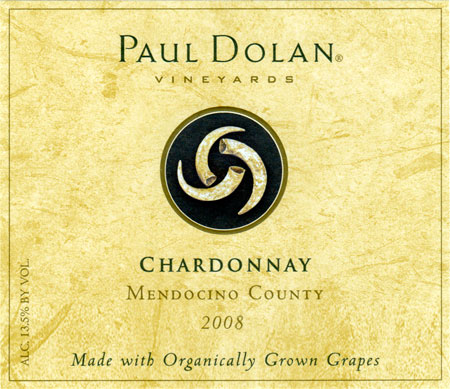 The Paul Dolan Vineyard 2008 Chardonnay was produced entirely from Mendocino County fruit. Fruit was sourced from two vineyards, each planted in the early 1970’s. This wine is 100% varietal. 20% of the wine underwent oak barrel aging for 8 months; the remaining 80% was aged in stainless steel. 3,080 cases of this offering were produced and it has a suggested retail price of $18.
The Paul Dolan Vineyard 2008 Chardonnay was produced entirely from Mendocino County fruit. Fruit was sourced from two vineyards, each planted in the early 1970’s. This wine is 100% varietal. 20% of the wine underwent oak barrel aging for 8 months; the remaining 80% was aged in stainless steel. 3,080 cases of this offering were produced and it has a suggested retail price of $18.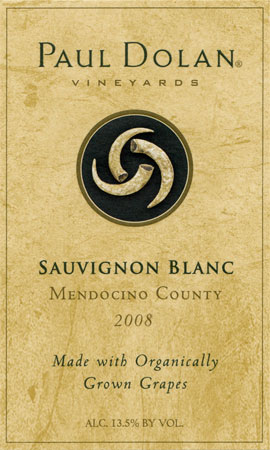 The Paul Dolan Vineyards 2008 Sauvignon Blanc was produced using fruit from two neighboring vineyards located at the headwaters of the Russian River in Mendocino County. This offering is 100% Sauvignon Blanc; it was both fermented and aged in stainless steel. 1,260 cases of this wine were produced and it has a suggested retail price of $18.
The Paul Dolan Vineyards 2008 Sauvignon Blanc was produced using fruit from two neighboring vineyards located at the headwaters of the Russian River in Mendocino County. This offering is 100% Sauvignon Blanc; it was both fermented and aged in stainless steel. 1,260 cases of this wine were produced and it has a suggested retail price of $18. I recently took part in a virtual tasting and had the opportunity to sample a number of Sauvignon Blanc’s from Chile. It was an interesting concept, eight winemakers in one room in Santiago Chile, a sommelier hosting from New York City and wine writers at home, all connected via web conference and tasting the same wines. I’d had tons of Chilean Sauvignon Blanc prior to this tasting, but sampling them side by side was illuminating. It showed off not only the variety of climates and terroir but also a host of winemaking styles. Each Sauvignon Blanc we tasted was pretty distinct. What follows are my impressions of the four that stood out to me.
First up is the
I recently took part in a virtual tasting and had the opportunity to sample a number of Sauvignon Blanc’s from Chile. It was an interesting concept, eight winemakers in one room in Santiago Chile, a sommelier hosting from New York City and wine writers at home, all connected via web conference and tasting the same wines. I’d had tons of Chilean Sauvignon Blanc prior to this tasting, but sampling them side by side was illuminating. It showed off not only the variety of climates and terroir but also a host of winemaking styles. Each Sauvignon Blanc we tasted was pretty distinct. What follows are my impressions of the four that stood out to me.
First up is the 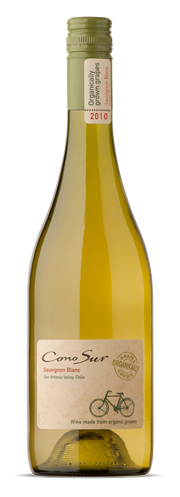 The third wine I really enjoyed was the
The third wine I really enjoyed was the